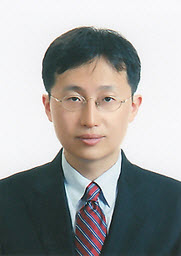
This “smart skin” is the first synthetic skin that is actually capable of reproducing the sense of touching real human skin.
“Smart” innovations have flourished in the past few years, transforming a range of common objects. For example, the phone has become a smartphone; the card has become a smartcard. Even innovations like the “smart shirt” exist now. Following the trend of this “smart” era, a professor in Seoul National University (SNU) — Professor KIM Dae-Hyeong of the Department of Chemical and Biological Engineering—has created frenzy with the creation of the world’s first artificial “smart skin”.
This “smart skin” is said to be the first synthetic skin that is actually capable of reproducing the sense of touching real human skin. Professor Kim states: “We developed the synthetic skin, which has the sense of feeling that exactly copies human skin. The skin can feel pressure, temperature, strain, humidity. Also, it’s soft, just like human skin, and embedded with heating elements that can make itself warm.”
The smart skin is able to recognize the sense of touch due to its unique layered structure. These layers enable the skin to be sensitive enough to identify subtle pressure. Professor Kim explains the unique structure: “The bottom layer of skin is a rubbery material that can express the softness of human skin. Above the rubber layer, there is ultra-thin polyimide and then silicon, which acts as sensors.” Professor Kim’s research team has managed to fasten the synthetic skin on a prosthetic hand. The hand has been able to perform a variety of complex actions, such as shaking hands, using a keyboard, and holding a ball. In these experiments, the artificial skin was successful in relaying reliable data rapidly.

Professor KIM Dae-Hyeong
However, for this innovation to become really useful, it must be able to communicate and send signals to the brain, thus enabling real-time commands. The team has made some progress in this area. So far, the scientists have been able to create a connection between the artificial skin and the brain in small animals. Making this connection work in the human brain is the next big step.
The “smart skin” is a major scientific breakthrough, creating new and exciting possibilities in many different areas. Because the skin can capture a range of touch, from temperature, pressure, humidity and more, it could be used for both individuals and in manufacture. As Professor Kim has stated, this innovation could possibly help Individuals who have lost limbs regain their sense of touch with the artificial skin. The innovation of this second skin could greatly aid the rapidly developing robotics industry.
Kim expressed his hopes for the artificial skin. “I hope a robotic limb with this synthetic skin can be used by disabled people. And for industrial uses, it can be applied to various types of robots, like a humanoid robot.”
- Professor Kim’s findings have been published online in the journal Nature Communications on December 2014.
- Professor Kim was selected as TR35 by Technology Review
- Professor KIM Dae-Hyeong's lab: http://flextronics.snu.ac.kr/
- SNU Dept. of Chemical and Biological Engineering: http://cbe.snu.ac.kr
-
Article referenced Wallstreet Daily
Written by OH Jung Eun, SNU English Editor, josefinaoh@snu.ac.kr
Reviewed by Eli Park Sorensen, SNU Professor of Liberal Studies, eps7257@snu.ac.kr

